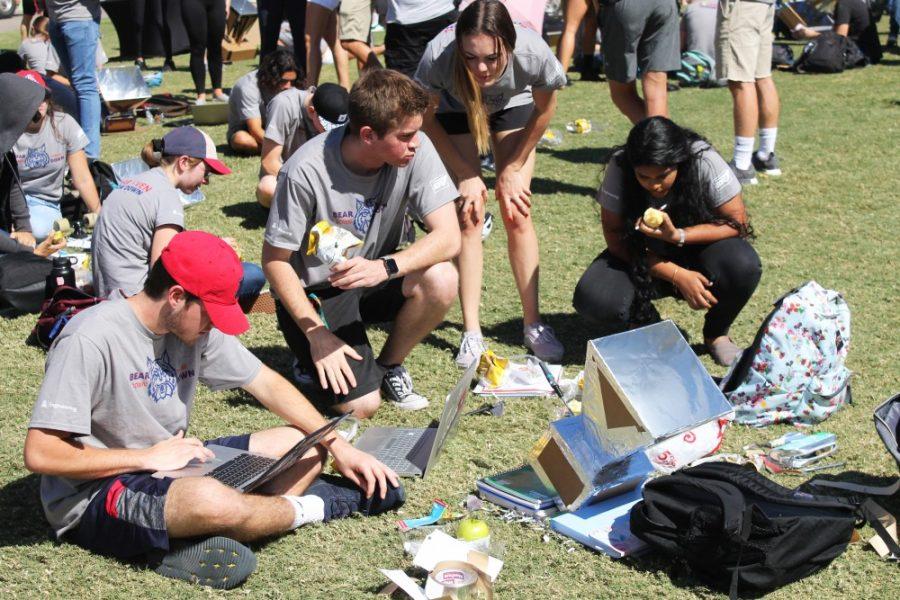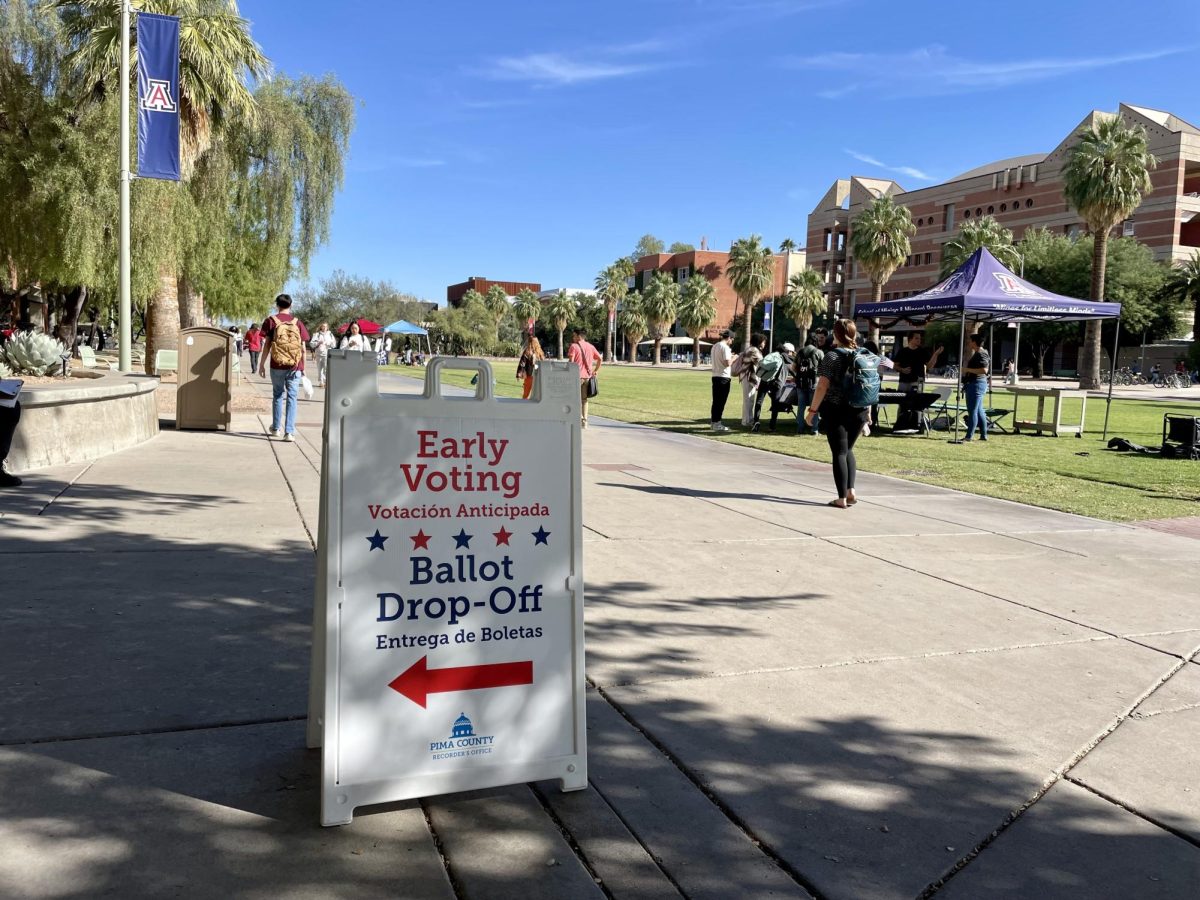On Wednesday afternoon, almost 600 freshmen students in the engineering program gathered on the UA Mall to test out their class projects – solar ovens made from scratch.
The students are all apart of the Engineering 102 course and were split into their individual lab sections along the mall. Students were divided into teams with which to build the solar oven model.
Known as the “Solar Oven Throw Down,” the event, sponsored by W.L. Gore & Associates, took place from 1:00-2:30 pm and consisted of students attempting to bake a biscuit inside their oven in the allotted time. The students had to calculate an estimated temperature that their ovens would reach, the goal being to hit that temperature during the throw down.
“They’re kind of judged on how well the oven does what they predicted. They want to get it as close to the temperature that they found,” said Kelly Ratliff, Assistant Director for Recruitment and Outreach for the College of Engineering.
To estimate the goal temperature for their ovens, students utilized their engineering course knowledge and applied different calculations to predict a temperature.
“We had to make a mathematical model in Excel that took into account all of the variables that would increase and decrease the temperature. We had like a really long formula that held all the variables, and then we just manipulated the variables in our document so we got a reasonable temperature,” said Mackenzie Bonny, an engineering student partaking in the event.
RELATED: Cooking biscuits on the UA Mall
Students had worksheets at the event which they used to write down their progress, the temperatures that the oven hits, and other questions regarding the project. The instructors collected the sheets at the end of the event and after grading them, will later present the lab section that had the most accurate predictions for their ovens with an award.
“There are like ten different sections. The section that gets the highest will win an award of some kind,” said Brian Cunningham, an adjunct lecturer for the course.
Students had around six weeks to work on the project, some even having to completely remake their models to make changes after having complications with their first ones.
“Our first [model] is a lot different than our second one. I guess there were a lot of problems with the first one,” said Jaden Murty, a student in the event, regarding her team’s solar oven.
One of her teammates, Kelsey Mason enjoyed seeing the changes they made from one model to the next.
“I liked seeing the improvements from our first one to this one. We could still improve on this one, but we changed so much and made it better. It’s cool to see the improvements,” Mason said.
Murty stated that it took their group around five hours to put together the second model which they used for the event, and around the same amount of time for their first attempt at the model.
RELATED: Solar cars run on Tucson sun
Pictures of models were shown to the students on what a solar oven can look like, and then it was up to the students to design it how they wanted to, with a few restrictions on sizing. Models were built with cardboard and tinfoil, and students at the event positioned them towards the sun.
The afternoon came with one brief moment of cloud coverage, met with a chorus of groans from students as the clouds prevented their ovens from working. The teachers walked around during the event and got to see the students’ final products and ask them about their work.
“[The models] were amazing. Every year they get better and better,” Cunningham said.
The students at the event listened to music, ate a provided lunch, and mingled with instructors and other students while their solar ovens were in action.
“This is something that every freshmen engineer does. It’s a great tradition, it’s fun,” Ratliff said.
Follow Quincy Sinek on Twitter









